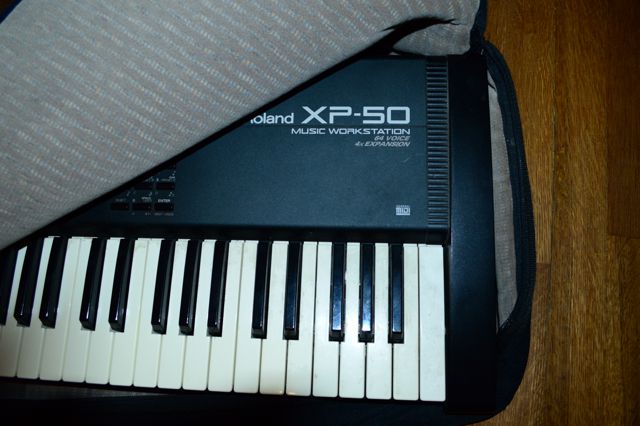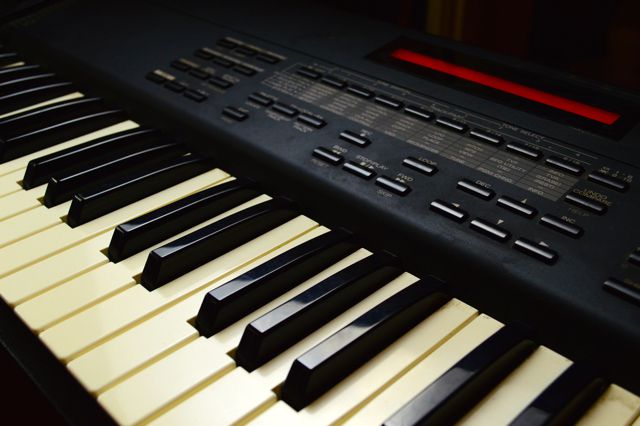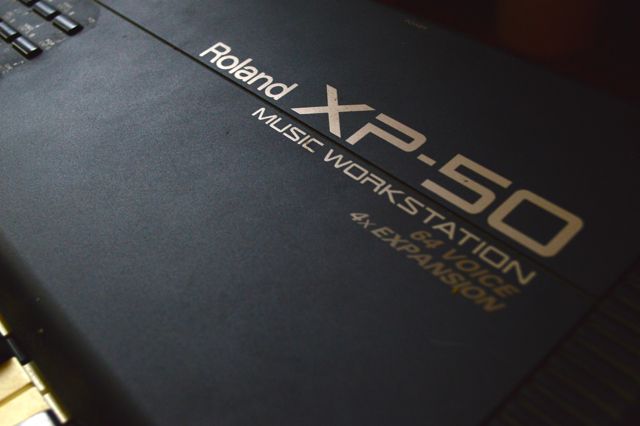While the full return of 'vintage' is in more than full swing, within electronic music, it stirred a recent curiosity within me, that led down a long road of remembrance I hadn't anticipated. Recently, I removed my old Roland XP-50 from its aged case that I still remember buying in Honolulu years ago. The old case even still smells like 'club' on the inside. And, in this article, I'd like to tell you a little bit about what made it special for me. And, why it was my main workhorse for years!
The Roland of the '90s
Years ago, Roland was at the top of the pool, though there were competitors that were greatly pushing them around that time. The main drive, it seemed between all the companies, was to create workstation keyboards and rack mount devices that could cover a broad range of music with highly detailed, and broad ranging internal patches. These patches, unless you had a computer with a decent patch editor, were the big prizes for many of us back then. Roland has always supplied great sound banks right out of the gate, and they did not stop with the XP/JV series. What was so exciting, back then anyway, was that you could purchase additional sound banks, that were specialized to certain genres of music, or just dedicated to a particular type of arrangement, or instrument.
I had purchased mine in the hopes of ending a 7-year drinking binge that had pulled me through 4 military posts, a few demotions, and a bad rep as the platoon party boy. Fearing for my career, and eager to return to music, I had picked up the XP-50 near the time of its release, third party, from a guy who'd only recently purchased it himself. It was my hope that I could find some kind of release during a hard time in my life, through music, as the US Army, at the time, could only offer me another bottle.
What About the Features?
The big selling point for me was the internal sequencer, which was almost identical to the flagship sequencer, of the time, the MC-50 MkII, which I couldn't really afford, and would've had to've purchased a lot more gear to be able to really make use of it. The XP-50 also worked entirely off of the Roland JV series library, which was really famous already from the JV-1080. The latter being a staple synth found in the racks of pretty much any composer of television, movies, commercials, and studio musicians during that time.
"The big selling point for me was the internal sequencer, which was almost identical to the flagship sequencer, of the time, the MC-50 MkII."
I failed to mention at this point that I'd grown up with Roland, prior to enlistment and had owned an S-550, a D-50, a W-30, a D-20, and a TR-707. So, the first time sitting down to sequence a song on the XP-50 felt like home in a far away land where I did not know anyone. I spent many nights alone re-learning the sequencer, and trying as hard as I could to spread the arrangement gently across the 64-note polyphony, shared by all 16 multi-timbral parts. Which, wasn't really that hard to do. You just had to watch really hyper hi-hats, as they would eat that polyphony up. I tended to substitute the internal delay, as a secondary echo for the hats, which supplied the rapidity needed for the type of industrial music I was performing at the time.
Where I was particularly excited, and this was the final selling point, was the song chaining functionality, a feature shared with its distant cousin, the MC-50 MKII. The XP-50 could play your whole set, from song to song, using a special disk load technique that would not inhibit the functionality of the internal synth. And, I really did plan to play live. And, I really did!
Playing Live with Roland
After a year of writing, sitting in a dark room, drying out, and sweating... a lot! Within the hills of Honolulu, it was now time for me to play my first set. And, it went much more smoothly than you may have thought. The Song Chain feature I had banked my whole live show around was now about to be used. At this point, I was working with a cool group of guys that had a lot of talent, and would later come together to form my long-time band, with still partner, Jay Tye. The two of us remaining as Soil & Eclipse.
Thanks to the way Roland had set up its multi-timbral interface, within the XP-50's digital readout, it was really easy for me to switch between different parts, and take over, for what the sequencer was playing, which is always something I've loved to do. Sometimes, I feel like playing a synth part, sometimes strings. The XP-50 gave me all the parts within my song, right there at my fingertips, and for the time, the navigation was awesome.
"Many people asked if we were using backing tracks, off of a DAT"
After our first gig, many people asked if we were using backing tracks, off of a DAT, which was extremely common practice. I was proud to say that we did not. We were all live MIDI. Which, didn't really mean much to many. But, it meant something to me, at the time. Evil nerd pride, I suppose.
What About the Sounds?
Looking back, I still find myself using patches that I'd ported over with Redmatica's Autosampler application, years ago, before the company's mysterious disintegration into nothingness. And, I'm happy to report that the Film Strings, patch C:145, I believe, did port over nicely into Reason's NN-XT format. And, I even made a pretty cool Ableton Sampler patch with the same audio files... Velocity mapping, in place! That was a patch I used on almost every song, as I loved how real they sounded. Those and the Kurzweil K series Batman Strings, really rocked my world.
But, it did so much more. The JV-XP Dance expansion was, and may still be, a highly sought after expansion, as it had some staple patches, and drum kits that a LOT of producers, especially in the Hip-Hop genre used.
The Vintage Expansion also had some killer Mellotron patches, to include the haunting Mellotron Choir.
The Future?
Now that I've pulled it back out, I plan to use it. Well, if I can get the screen working again! It's rode hard, and definitely shows signs of its age. But, as I mentioned before, it came to me during a time when I really needed a release, and an escape. And, it never skipped a beat. Thanks for a good job on this one, Roland. It worked as advertised.
Pros: Lots of polyphony, even for todays standards. Great sound banks, and a very efficient sequencer, with song chaining. Cons: Floppy drive, no USB port, limited technical support, as the staff has probably changed several times since this 'workstation' was released. Price: $1995 at the time (around $450 secondhand now). |





 © 2024 Ask.Audio
A NonLinear Educating Company
© 2024 Ask.Audio
A NonLinear Educating Company
Discussion
:(
Now this is fantastic, you can use the USB that is been given to you with the package, up to 4 GB thats 2500 floppies. I can tell you XP50 has been revamped 4 years and still kicks ass everytime. Using an external Midi sound controller thats makes sounds like to no end.
There will be in the future a remote/network connection so you can use it on the internet or various computer/s.
The only draw back is that apart drom the XP 80, it doesnt have a click-out. You need an external rhythm machine and use the cowbell and
Want to join the discussion?
Create an account or login to get started!